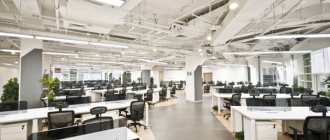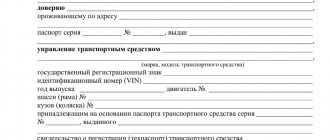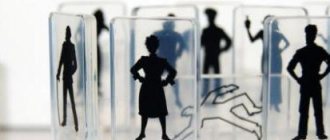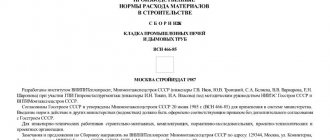- It is allowed to store no more than a one-shift supply of raw materials and finished products at the workplace.
- When installing microfilming equipment, the height of the premises must be at least 3 meters.
- Doorways of rooms for copying and duplicating work should not have thresholds (or should be equipped with ramps), the doors should open towards exits (corridors).
- Polymer and other building materials used for interior decoration must be approved for use by bodies and institutions of the State Sanitary and Epidemiological Supervision.
- The floor surface in industrial premises must be smooth, without potholes, non-slippery, easy to clean and wet, and the floor covering must have antistatic properties.
- Premises where copying machines are located. printers, faxes, etc.
Sanpin for office workers
And after each hour of work, the room should be ventilated (Sanitary and epidemiological rules and regulations SanPiN 2.2.2/2.4.1340-03 “Hygienic requirements for personal electronic computers and organization of work”; approved by the Chief State Sanitary Doctor of the Russian Federation on May 30, 2003 .). Some situations are not directly regulated by sanitary standards, but in practice they occur regularly. These include, for example, malfunctioning toilets in the building. In this case, according to Rostrud, the employee has the right to refuse work, and the employer must provide him with another job that does not threaten his health until the problem is resolved. If this is not possible, downtime is declared, and the employee can count on wages during downtime in the amount of at least 2/3 of his average salary (Article 157 of the Labor Code).
Standard premises for eating at the enterprise
- 3.1 Regulatory grounds for creating a rest room and meals
- 2.1 Meal room - legislative regulation
Requirements for the organization of a workplace To put it briefly, a workplace is an open or closed area of territory or space, equipped with the necessary production means, within which the employee is engaged in work activities.
It can also be assigned to a group of employees. Typically, a certain part of the general production cycle is carried out at the workplace.
It is logical that in order to achieve high labor productivity, it is necessary to provide conditions under which his performance will be the highest.
Important! The employer should adapt workplaces, taking into account not only the specific type of activity and qualifications, but also the individual physical and psychological characteristics of each employee. General requirements for workplace organization These requirements are regulated by the Labor Code of the Russian Federation, Sanitary and Epidemiological Rules and Standards (SanPiN) and other legal documents. The purpose of organizing a workplace is to ensure high-quality and efficient performance of work in compliance with established deadlines and with full use of the equipment assigned to the employee.
To achieve this, organizational, technical, ergonomic, sanitary, hygienic and economic requirements are imposed on the workplace.
Sanitary requirements for auxiliary and domestic premises of industrial enterprises
What buildings and premises are considered auxiliary? What documents determine the requirements for the composition and maintenance of sanitary premises at industrial enterprises? What liability does an employer face for violating the sanitary requirements for the maintenance of auxiliary premises?
Each industrial enterprise has auxiliary and household premises designed to meet the social and living needs of employees during work.
We recommend reading: What you can get from the government for free in 2020
Let's consider what sanitary requirements are established for these premises.
According to Part 1 of Art. 24 Federal Law of March 30, 1999 No. 52-FZ
“On the sanitary and epidemiological well-being of the population”
(as amended on 07/03/2016) during the operation of industrial and public premises, buildings, structures, equipment and transport, sanitary and anti-epidemic (preventive) measures must be carried out and safe working, living and rest conditions for humans must be ensured in accordance with sanitary rules and other regulatory legal acts of the Russian Federation. One of the directions of state policy in the field of labor protection is the establishment of a procedure for providing workers with personal and collective protective equipment, as well as sanitary facilities and devices, medical and preventive means at the expense of employers (Art.
210 Labor Code of the Russian Federation; hereinafter referred to as the Labor Code of the Russian Federation).
In accordance with labor safety requirements, sanitary services and medical support for workers are assigned to the employer (Articles 212, 223 of the Labor Code of the Russian Federation). For these purposes, the employer, in accordance with established standards, equips sanitary premises, premises for eating, premises for providing medical care, rooms for rest during working hours and psychological relief; first aid stations are organized, equipped with first aid kits; apparatus (devices) are installed to provide workers in hot shops and areas with carbonated salt water, etc.
What should be the air temperature in the office according to sanitary standards?
Attention
In a closed work space, it can be aggravated by large crowds of people, the presence of working office equipment, and compliance with a special dress code. In this regard, the optimal temperature values and the permissible maximum during the hot period of the year are legally established. For office workers they are 23-25°C with a relative humidity of 40-60%.
Temperature increases up to 28°C are allowed. Exceeding the summer temperature in the office If the thermometer inside the office deviates from the optimum by more than 2°C, it becomes much more difficult to work. The employer will have to supply air conditioning for employees and ensure its normal operation and timely maintenance. If for some reason this is not done, the employee should not meekly endure the sweltering heat, while also trying to meet professional requirements.
Sanitary rules, norms and hygienic standards for working with office equipment
The updated SanPiN standards put forward requirements for:
- Microclimate;
- Noise and vibration levels;
- Exposure to electric, magnetic and electromagnetic fields.
These norms are marginally possible indicators of factors.
Compliance with the requirements for production premises can protect employees who are at the workplace eight hours a day (forty hours a week) from the development of pathologies or occupational diseases associated with the specific performance of work duties. Download (Sanitarnye-pravila-i-normy-SanPiN-2.2.4.548-96.doc, 121KB) The introduction of new hygienic requirements for the microclimate of industrial premises cancels the previously approved standards. https://youtu.be/I2kdHuzleJw
For example, SanPiN 2.2.41191-03 regarding the effects of electromagnetic fields. The most important issues regulated by SanPiNs are temperature and microclimate in the workplace of office employees.
Question answer. Consultation.
In the end, the number of people who do not want to pay for their colleagues’ meals is going down sharply.
daily work (shift), and in the case of cumulative accounting of working time - in excess of the normal number of working hours for the accounting period. In addition, involving an employee in overtime work is possible only with his written consent (except for truly urgent and extraordinary cases, disasters, cataclysms, etc.).
An extremely indicative situation is when, once at the workplace, an employee begins to clean himself up (more towards the fair sex), brew coffee or tea (applies to both men and women), go for a “smoke break” (more susceptible to men). Rest in the workplace is, of course, important, but it is also strictly limited.
Rest time is the time during which an employee is free from performing work duties and which he can use at his own discretion. No one limits the use of such time, either qualitatively or quantitatively. The employee himself chooses what to do during this time.
00, but there are no restrictions here. You can set lunch from 17:00 to 18:00 and there will be nothing terrible here. It is worth noting that specific deadlines are established for some categories of workers. For example, for car drivers. No one is saying that such a period cannot be divided into several ten-minute segments, but the absence of the phrase “total duration” allows us to conclude that the legislator’s intention regarding rest time is as one whole.
It goes without saying that the legislator does not limit the employer and employee in the amount of time provided for rest, and if such an agreement is reached, then there will be nothing illegal about it. Many organizations specifically introduce two small periods of time for “morning tea” and “evening tea.”
https://www.youtube.com/watch?v=ytcreatorsru
Only a real dictator in the manager’s chair can deny an employee the right to drink tea or even just water. Since such a phenomenon as unscheduled tea drinking or a “smoke break” cannot be fought, then it needs to be regulated and streamlined as much as possible. This approach seems to be the most fruitful and common sense rather than a complete ban on such actions or a lack of control over them.
There are also technical interruptions caused by relevant production needs. But such breaks are already paid, since their number and duration cannot in any way depend on the employee.
What are the consequences for an employee of violating the working regime?
So, we can conclude that during working hours, the beginning and end of which are established in the internal regulations, the employee is obliged to engage in his direct labor responsibilities provided for by the previously concluded employment contract. He can deal with his personal affairs outside of working hours, i.e. during rest (Article 108 of the Labor Code of the Russian Federation) or during special breaks (Article 109 of the Labor Code of the Russian Federation).
It may be noted that the employer has the right to bring the employee to disciplinary liability under Art. 192 of the Labor Code of the Russian Federation for his use of working time for personal purposes. According to the norm of this article, for committing a disciplinary offense, the employer has the right to reprimand the employee, reprimand and even dismiss him on the appropriate grounds provided for in Art. 81 Labor Code of the Russian Federation.
At the same time, the employer cannot apply any other disciplinary sanction (for example, a fine in the form of a fine) to the employee, since this will worsen the latter’s position in comparison with the Labor Code of the Russian Federation (Article 8 and Article 9). In addition, the current labor legislation does not provide for such a type of disciplinary action as a fine.
However, periodic violation of internal regulations, in particular, engaging in “non-working” activities during working hours, may affect the amount of the bonus of the offending employee. Naturally, if this norm is provided for by local regulations.
So it turns out that, taking into account the gravity of the offense committed for using working time for personal purposes, the employer has the right to reprimand or reprimand the employee. An employee can be fired only if the employee regularly fails to fulfill his duties due to the fact that he is distracted by his personal affairs (“smoking break”, talking on the office phone about personal matters, shopping).
For example, an employer has the opportunity to dismiss an employee under clause 5 of Art. 81 of the Labor Code of the Russian Federation on the basis of “repeated failure by an employee to fulfill work duties without good reason.” But for this, the condition for dismissal under this article is a previously imposed disciplinary sanction in the form of a reprimand or reprimand, which many employees treat as an annoying misunderstanding and a mosquito bite.
In this case, only the employee from whom the previously imposed disciplinary sanction has not been removed can be considered to have a disciplinary sanction (see Article 194 of the Labor Code of the Russian Federation. When applying a disciplinary sanction, one should be guided by the procedure established by Article 193 “Procedure for applying disciplinary sanctions” of the Labor Code of the Russian Federation).
If your manager has not endowed himself with dictatorial powers and has not introduced a system of fines for drinking tea/coffee in the workplace or for a banal “smoke break,” then do not abuse this. Or invite your colleagues to have tea only at a strictly defined time and take “smoke breaks” a certain number of times. Having learned about such an initiative and self-organization (and he will definitely find out about it), the manager will only be happy.
Office workplace standards
The temperature in the office workplace for them should be no less than 20 and no more than 28 degrees above zero for a normal eight-hour working day. In summer, the most optimal temperature is considered to be 23-25 degrees Celsius. If the thermometer rises to 29 degrees, the working day cannot exceed 6 hours; up to 32.5 degrees – 1 hour. In winter, the normal temperature in the office is set within 22-24 degrees. A decrease in temperature to 19 degrees entails a reduction in the working day by 1 hour. And if it drops to 13 degrees, office workers have the right to leave work an hour after they start.
- Illumination of the office workplace In rooms where managers work with personal computers, both artificial and natural lighting should be provided.
Radalada.ru
Contents: Question: Is it necessary to equip a place for employees to eat in the office? Answer dated 10.30.2013: The employer is obliged to provide working conditions that comply with state regulatory requirements for labor protection and production safety (Art.
22, art. 163 Labor Code of the Russian Federation). For these purposes, he is responsible, in particular, for equipping the premises for meals for employees in accordance with established standards (Part 1 of Article 223 of the Labor Code of the Russian Federation). Moreover, for failure to comply with these labor protection requirements, an administrative fine is provided (Part 1 of Article 5.27 of the Code of Administrative Offenses of the Russian Federation):
- for organizations - from 30,000 rubles. up to 50,000 rub.
- for individual entrepreneurs – from 1,000 rubles. up to 5,000 rubles;
- for officials – from 1,000 rubles. up to 5,000 rubles;
For legal entities and individual entrepreneurs, administrative suspension of activities is also possible for up to 90 days (Part.
1 tbsp. 5.27 Code of Administrative Offenses of the Russian Federation). Requirements for the creation of places for eating are enshrined in sanitary standards. Thus, industrial enterprises must have canteens (clause
2.49 SNiP 2.09.04-87 “Administrative and domestic buildings”, approved.
Resolution of the USSR State Construction Committee dated December 30, 1987 No. 313 (hereinafter referred to as SNiP 2.09.04-87)). Moreover, if the number of workers in one shift at such an enterprise is less than 30 people, then instead of canteens it is allowed to equip rooms for eating, equipped with a washbasin, a stationary boiler, an electric stove, and a refrigerator (clause
2.49, clause 2.52 SNiP 2.09.04-87).
If there are less than 10 workers, then it is possible not to allocate a separate room for meals, but it is enough to install a separate table for them to eat (2.52 SNiP 2.09.04-87). SNiP 2.09.04-87 establishes that these standards apply to the design of administrative and residential buildings up to 50 m high, including the attic floor, and enterprise premises.
Therefore, in our opinion, these standards also apply to office premises. Thus, the employer must equip a separate place for employees to eat in the office. Depending on their number, this may be a separate table, room or dining room.
https://youtu.be/FNVDpmmXL1E
Temperature standards for office premises
Info
Workplace standards in office premises According to statistics, less than 42% of bosses are concerned about the compliance of workplaces in the company's office with sanitary standards. Requirements for the workplace It is very important for knowledge workers to have favorable conditions - this directly affects their well-being, and therefore productivity. Therefore, management needs to take a responsible approach to choosing office space for rent.
Standards for an office workplace: what ideal conditions should be In order for company employees to feel comfortable, it is necessary to take into account several parameters of the selected premises. Here's what the SanPin standards say about the office workplace:
- Area The area of one workplace in the office for an employee working on a computer with a plasma or LCD monitor must be at least 4.5 square meters. m.
Sanpin standards for office premises
Important
Updated 10/17/2017 23:55 We offer you the service of drawing up a statement of claim in the courts of general jurisdiction at a special price for Moscow and the Moscow region of 3,000 rubles. for PCs with CRT monitors - 6 sq.m per employee; for PCs with LCD monitors - 4.5 sq.m per employee (SanPiN 2.2.2/2.4.1340-03) Excerpt from SanPiN 2.2.2/2.4 .1340-03: III. Requirements for premises for working with PCs 3.1. Premises for PC operation must have natural and artificial lighting. The operation of PCs in rooms without natural light is permitted only with appropriate justification and the presence of a positive sanitary and epidemiological conclusion issued in the prescribed manner.
3.2. Natural and artificial lighting must comply with the requirements of current regulatory documentation.
Sanitary rules and regulations for office premises
The importance of the office microclimate Temperature conditions greatly affect the well-being and performance of people. Increased or decreased air temperature, which affects an employee for a long time, not only has a negative impact on health, but also sharply reduces labor productivity. Office employees perform a wide variety of activities, most of which involve spending a long time in the same position, usually sitting and sedentary:
- work at a computer;
- draw up paperwork;
- communicate with clients;
- make decisions, etc.
Mental work and physical inactivity do not go well with an uncomfortable room temperature.
Instead of the subjective term “comfort” in professional vocabulary, a more precise and defined parameter “optimal conditions” is used. As for the optimal air temperature, this is a value determined through complex physiological studies and calculations, taking into account average human needs. NOTE! Requirements for optimal temperature conditions are within the scope of legislation, which is recorded in the relevant regulatory documents. SanPiN protects the health of employees Sanitary standards of the Russian Federation are collected in a special code that defines optimal hygienic and health standards for various areas of human life, including employment. This is documentation related to the medical and technical fields, and at the same time legislative, and therefore mandatory.
Sanitary and epidemiological requirements for premises (SanPiN requirements)
The documents adopted in Russia to carry out sanitary control are called sanitary norms and rules (SanPiN). These regulatory documents indicate the minimum permissible or limit values of indicators, acceptable conditions that characterize the environment. If an organization violates sanitary and epidemiological conditions , then it bears responsibility for this, most often in the form of fines.
All organizations, regardless of their subordination structure, are responsible for compliance with SanPiN . Compliance with sanitary norms and rules is a guarantee of ensuring normal and comfortable living and working conditions for humans. Failure to comply with established norms and rules can cause harm to human health, which is contrary to safety.
Violation of sanitary norms and rules is either intentional or accidental non-compliance. Ignorance of the law, as is known, does not exempt one from responsibility.
Sanitary requirements for premises
A premises that is used to provide services to the public directly or indirectly, or even a premises in which public activities are carried out, must 100% comply with the requirements of modern sanitary and epidemiological documents.
You should know that, for example, when organizing a store on the ground floor of an apartment building, domestic and industrial sewerage must be made separately from each other, and shipping and loading of goods cannot be done from the side of the residential entrance.
The most interesting thing in this case: compliance with sanitary requirements for premises if the entrances (front doors) of a residential building face both sides. SanPiN requirements and they are all spelled out in regulatory documents and rules. Both private entrepreneurs and organizations are required to comply with sanitary standards in the premises
Even for individuals, there are some sanctions regarding compliance with public hygiene rules, etc.
Unfortunately, the premises do not meet the requirements very often. For example, sanitary standards for the premises indicate that the ceiling height should be 3 meters, but the company that designed the house missed this point already at the initial stage.
Or after you rented a room, you discovered that it is impossible to implement autonomous ventilation according to the requirements. Even if you are not informed and do not know about the standards, during the inspection these inconsistencies will be identified.
A fine or even criminal liability may be imposed.
To prevent possible risks and unplanned expenses in the future, call tel. 416-32-01 or leave a request for a free consultation regarding the compliance of the premises with the established sanitary and epidemiological conditions and hygienic requirements for premises .
Hygienic requirements for premises (production)
The meaning of the requirements is to create favorable and comfortable working conditions for people that do not cause harm to health.
Here are some of the basic hygienic principles on which hygiene requirements are based:
- All necessary measures must be implemented to ensure that there are no rodents in the premises.
- The floor of the room should not be slippery to prevent possible injuries.
- The layout and size of the premises must exclude the possibility of product contamination.
- Requirements for utility networks and life support systems must be met. Cables and pipes are sewn into the wall.
- Interior finishing with tiles that resist water and mechanical stress.
- Implementation of the flow of all production processes (especially important for food industry enterprises)
- Implementation of prescribed mold control measures.
- Storage and use of detergents and disinfectants.
- There should be sinks in the room.
- Garbage bins must be installed and promptly cleaned in the premises.
Any production facility must be organized in accordance with established norms and rules, otherwise the owner will be held liable for inconsistencies. SanPiN requirements for the premises must be carefully studied and implemented in practice.
SanPiN for nutrition are developed for public catering enterprises and the food industry - for organizing all processes related to nutrition. Violation of requirements can become not only a threat to health, but also to human life. Therefore, violation of SanPiN nutrition entails the heaviest fines and criminal liability in some cases.
According to SanPiN, requirements for premises are developed for all types of premises without exception. Therefore, you should contact a professional company for advice or to conduct a sanitary and epidemiological audit. It is much cheaper to ensure your activities, processes and premises are in full compliance with established standards than to incur costs in the future for additional work to eliminate non-compliances and pay fines.
SanPiN requirements for public catering organizations SanPiN requirements for medical organizations SanPiN requirements for hairdressing and beauty salons SanPiN requirements for educational institutions SanPiN requirements for food production SanPiN requirements for stores SanPiN requirements for wholesale and retail warehouses SanPiN requirements for industrial enterprises SanPiN requirements for motor transport enterprises
Consultation on SanPiN requirements for cities and regions of the Russian Federation:
Moscow, St. Petersburg, Novosibirsk, Yekaterinburg, Nizhny Novgorod, Samara, Kazan, Omsk, Chelyabinsk, Rostov-on-Don, Ufa, Volgograd, Perm, Krasnoyarsk, Krasnodar, Tver, Veliky Novgorod, Smolensk, Tula, Orel, Bryansk, Saratov, Chita, Petropavlovsk Kamchatsky, Ulan-Ude, Lipetsk, Vologda, Murmansk, Arkhangelsk, Syktyvkar, Tomsk, Barnaul, Irkutsk, Makhachkala, Nazran, Nalchik, Petrozavodsk, Yoshkar-Ola, Saransk, Yakutsk, Vladikavkaz, Izhevsk, Abakan, Cheboksary , Vladivostok, Stavropol, Khabarovsk, Blagoveshchensk, Astrakhan, Belgorod, Vladimir, Voronezh, Ivanovo, Kaliningrad, Kaluga, Kemerovo, Kirov, Kostroma, Kurgan, Kursk, Magadan, Orenburg, Penza, Pskov, Ryazan, Yuzhno-Sakhalinsk, Tambov, Tyumen , Ulyanovsk, Yaroslavl, Birobidzhan, Khanty-Mansiysk, Naryan-Mar, Tura, Salekhard, Grozny, Simferopol, Sevastopol, Crimea
Source: https://ecodez-centr.ru/trebovaniya-sanpin
Sanpin norms for office premises area per person
When using a PCEM with a CRT-based VDT (without auxiliary devices - printer, scanner, etc.) that meet the requirements of international computer safety standards, with an operating time of less than 4 hours per day, a minimum area of 4.5 m2 per user workstation is allowed (adults and students of higher professional education). 3.5. For interior decoration of rooms where PCs are located, diffusely reflective materials with a reflection coefficient for the ceiling of 0.7 - 0.8 should be used; for walls - 0.5 - 0.6; for the floor - 0.3 - 0.5. 3.6. Polymer materials are used for interior decoration of premises with PCs in the presence of a sanitary and epidemiological conclusion.
3.7. Premises where workstations with PCs are located must be equipped with protective grounding (grounding) in accordance with the technical requirements for operation. 3.8.
Meal room at an enterprise: standards
Most businesses have a room where employees can rest and have lunch. The eating room must meet sanitary requirements.
We will tell you about the rules for its arrangement in our article.
The regulatory parameters of staff rest rooms, as well as lunch rooms, are contained in several sources of law. The main one is the Labor Code of the Russian Federation. Art. 22 of the Labor Code of the Russian Federation obliges the employer to comply with labor safety standards.
For employees, in accordance with the Internal Labor Regulations, a break from work for lunch is established (). Such a break can range from 30 minutes to 2 hours and is not included in working hours.
If providing a full lunch is impossible for technological reasons, then a meal break is allocated during working hours.
assigns to the company the responsibility for arranging a rest room and meals at work. These premises must meet accepted sanitary standards. determines the obligatory premises for lunch when there are more than 30 people working simultaneously. This document also provides technical characteristics and requirements for dining areas.
Not all employers know that the State Labor Inspectorate has the right to demand the liquidation of an enterprise where labor safety requirements are violated.
Read in the magazine “Handbook of Labor Safety Specialists” for what violations the inspectorate can close an organization and how to avoid it.
Organizing a place for eating and resting at an enterprise is, first of all, a financial issue for the employer. Since this room must meet the established environmental parameters, it often requires considerable investment. We are talking not only about buying a refrigerator and other kitchen utensils, but also about sufficient air conditioning.
Therefore, many people prefer to save money, and workers are forced to have lunch at their desks or go to the nearest canteen. Current legal norms suggest that such zones are mandatory only for employees who are not provided with a full lunch time, but only breaks during the work process (Article 108 of the Labor Code of the Russian Federation)









